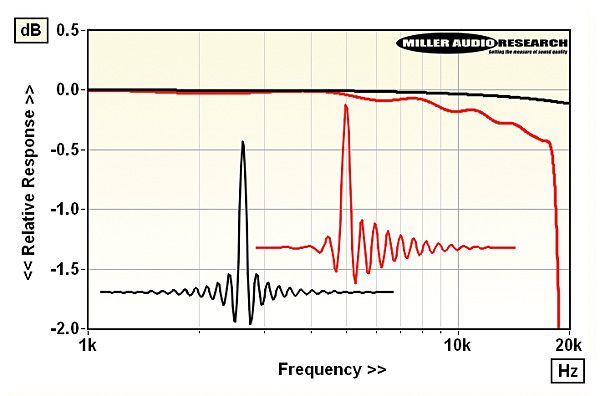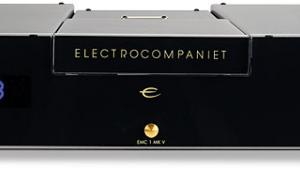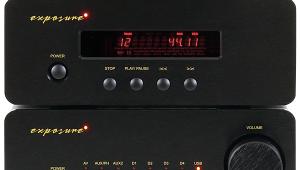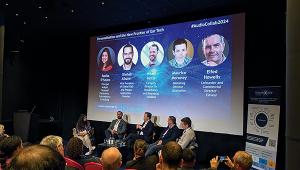Pro-Ject CD Box RS2 T / Pre Box RS2 Digital CD Player/DAC Pro-Ject's Pulses
Not only does Pro-Ject offer solid-state and 6922EH-based tube output options but it also includes seven different digital filter 'recipes'. Based on the algorithms we saw in the Pre Box S2 Digital [HFN Aug '17] – but minus its 'Optimal Transient' mode – the 'Linear Phase Fast' [black traces, inset Graph], 'Brickwall' and 'Apodising' options are all steep roll-off types, their impulse responses showing pre- and post-ringing (echoes) but achieving a superior rejection of alias images (120dB, 103dB and 89dB, respectively) and offering the flattest responses.

The 'Minimum Phase' filters eliminate pre-echoes but have greater post-ringing, the 'Fast' version yielding a 94dB stopband rejection and –0.1dB/20kHz response while the 'Slow' filter, with just three post-ripples, offers 21dB and –5.1dB/20kHz, respectively. The 'Linear Phase Slow' option has just two pre/post ripples, delivering a mere 16dB suppression of aliasing images and a –3.6dB/20kHz response. Hybrid digital filters, combining linear and minimum phase characteristics, are becoming commonplace and Pro-Ject's 'Corrected Phase Fast' is quite typical [red traces, above]. This offers a superior 97dB alias rejection but a response (–12dB/20kHz with CD and –24dB/45kHz with 96kHz media) that shows obvious in-band rippling. PM

























































